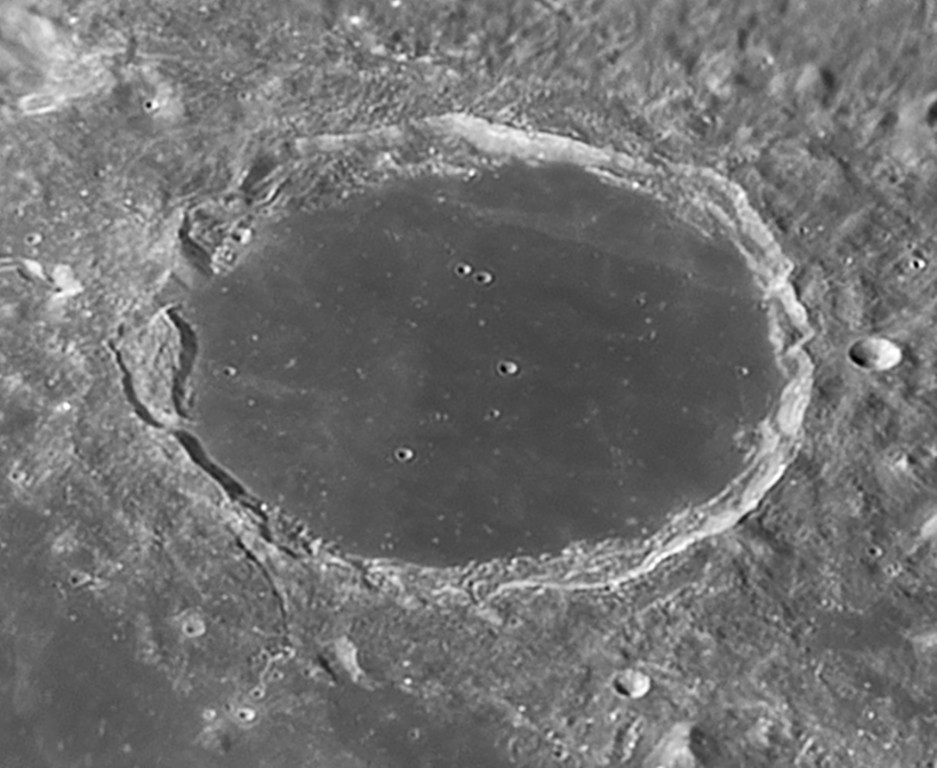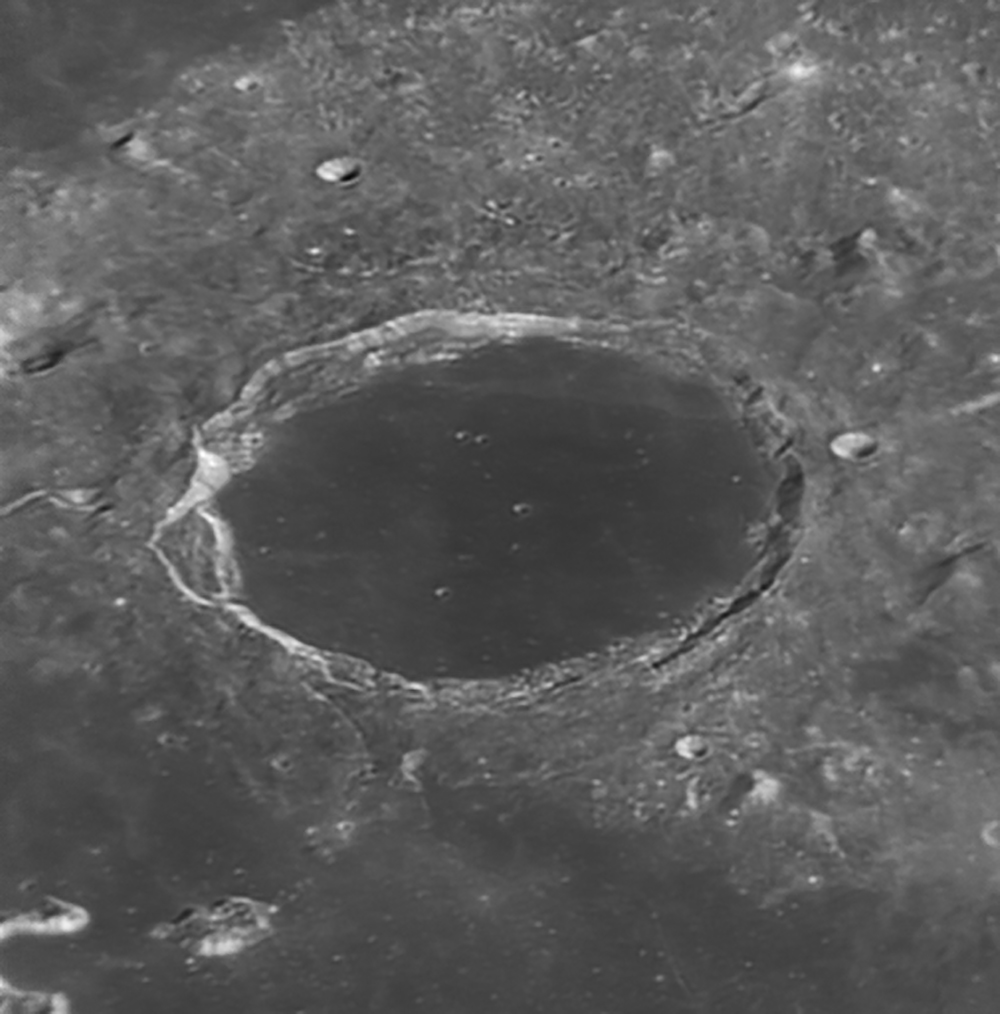Plato è uno dei più grandiosi crateri lunari. Il pavimento, ricoperto di lava, è butterato da centinaia di crateri: i quattro principali sono larghi circa 2-2,5 km, i più piccoli accessibili alla strumentazione amatoriale 2-300 metri.
È abbastanza strano che mentre Platone e Aristotele sono ricordati sulla Luna da grandi e importanti crateri, non ve ne sia nessuno intitolato a Socrate, che fu il maestro del primo e il principale ispiratore del suo pensiero.
Platone descrive in questo modo sublime e commovente gli ultimi istanti di Socrate, dopo che ebbe bevuto il bicchiere di cicuta: “a quel punto non potemmo più trattenerci, e tutti ci mettemmo a piangere. No, non per lui, che abbandonava sereno la vita terrena, ma per noi, che restavamo privi di un tale amico.”
(ENG) The lava flooded ground is hit by hundreds of craters: the main four are some 2-2.5 km large, the smallest accessibile to amateur telescopes 2-300 meters.
It is quite singular that while Plato and Aristotle are remembered on the Moon with big and important craters, there’s no one for Socrates, which was the teacher of the former and the main inspirer of his philosophy.
Plato describes in this sublime and moving way the last moments of Socrates, after he had drunk the poisoned glass: “at that point all of us could not hold back any longer, and we all began to cry. No, not for him, who was leaving happy this world, but for us, who were left without such a friend.”
Plato in alta risoluzione
Questa ripresa in alta risoluzione di Plato mostra i sei crateri maggiori (diametro dell’ordine del km) e dozzine di altri non risolti. Il pavimento del cratere ne contiene in realtà centinaia.
(ENG) An high-resolution view of the floor of Plato, showing the 6 biggest craterlets (1,5- 2,5 km wide) and dozens of others unresolved, appearing as white dots.
I craterini di Plato
Questo famoso plateau lunare contiene centinaia di craterini. I 4 maggiori, denominati Plato A, B, C e D, intorno ai 2.5 km di diametro, appaiono risolti in questa ripresa, insieme a Plato E ed F prossimi alla parete del cratere. Sono rilevabili un certo numero di altri crateri ancora più piccoli, che appaiono come spot bianchi.
(ENG) This famous lunar plateau contains hundreds of craterlets. The biggest four, named Plato A, B, C and D (diameter around 2.5 km) are well resolved in this image, together with the E and F close to the eastern and western rim. Other smaller craterlets are detectable as white spots here and there.

